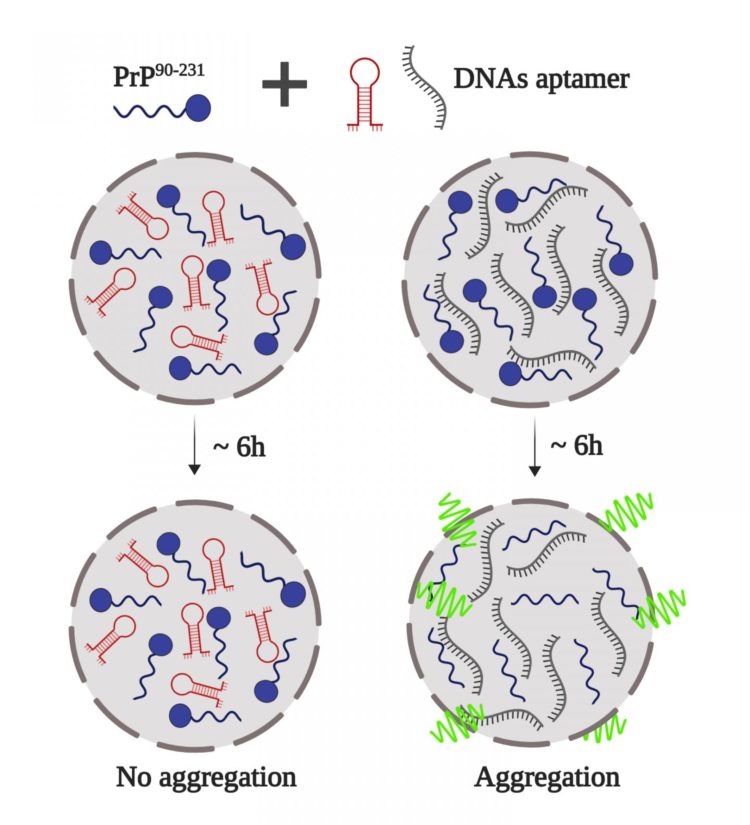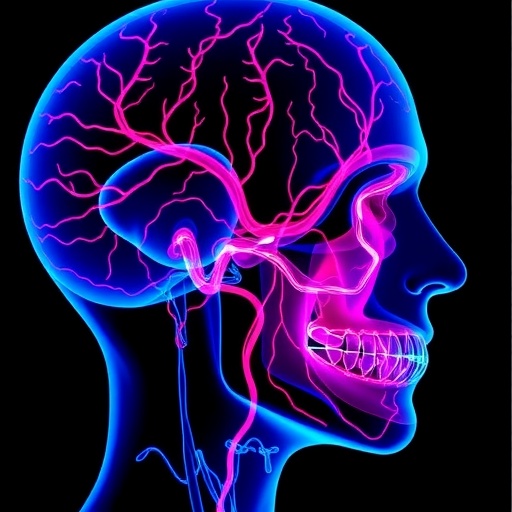Brazilian scientists have found that prion proteins form liquid droplets that can turn into a solid and toxic state, and that DNA modulates this process

Credit: Carolina Matos and Anderson Pinheiro
Researchers at the Federal University of Rio de Janeiro (UFRJ), in Brazil, have identified that the interaction between prion proteins and DNA may be behind the formation of protein amyloid aggregates and of the emergence of neurodegenerative diseases such as Creutzfeldt-Jakob disease and other spongiform encephalopathies. The study appears today in the FASEB Journal.
Led by UFRJ Professors Yraima Cordeiro and Anderson Pinheiro, the scientists have found that the prion protein (PrP) suffers liquid-liquid phase separation, and that this mechanism is finely controlled by some DNA sequences. In a process similar to oil droplets dispersed in an oil-water emulsion, the DNA leads PrP to form liquid droplets, turning it into a gel-like state or even changing them into a solid. They have also observed that these properties depend on the conformation of the DNA aptamer (a hairpin or extended conformation) and on the stoichiometry of the protein-nucleic acid interaction.
The process of turning liquid droplets into a solid state could explain the formation of abnormal and irreversible clumping of the prion protein, known as amyloid aggregates. These structures are toxic to the brain and are related to the development of transmissible spongiform encephalopathies, such as the Creutzfeldt-Jakob disease and the bovine spongiform encephalopathy (BSE), commonly known as mad cow disease. The link between amyloid aggregates and the diseases has been known for years, but how these structures form remains unclear. The study brings insights that might help answer this question.
The main findings of the research enlighten the property of the prion protein to bind nucleic acids in a similar fashion of well-described proteins that cause other neurodegenerative diseases. This opens the possibility of targeting the disease by selecting specific DNA sequences to control or avoid the organelles turning into non-functional gels and solids.
###
The paper “Liquid-liquid phase separation and fibrillation of the prion protein modulated by a high-affinity DNA aptamer” is available online on FASEB Journal.
Carolina O. Matos, a former graduate student in Pinheiro’s laboratory, is the paper’s first author. The other authors are Yulli M. Passos, Mariana J. do Amaral, Bruno Macedo and Matheus H. Tempone (actual and former members of Cordeiro´s laboratory); Ohanna C. L. Bezerra, Milton O. Moraes and Sotiris Missailidis, all of Oswaldo Cruz Foundation (Fiocruz), Brazil; Marcius S. Almeida and Jerson L. Silva, both of UFRJ; Gerald Weber of the Federal University of Minas Gerais, Brazil; and Vladimir N. Uversky of the University of South Florida, USA.
The research used resources from the Brazilian Synchrotron Light Laboratory (LNLS), an open national facility operated by the Brazilian Center for Research in Energy and Materials (CNPEM) of the Brazilian Ministry for Science, Technology, Innovations and Communications (MCTIC), and the DNA sequencing platform at FIOCRUZ/RJ.
The study was funded in part by the Coordination for the Improvement of Higher Education Personnel, Ministry of Education (CAPES / MEC), the Carlos Chagas Filho Foundation for Research Support in the State of Rio de Janeiro (FAPERJ), the National Council for Scientific and Technological Development (CNPq), a Brazil Initiative Collaboration Grant from Brown University, and the National Institute of Science and Technology for Structural Biology and Bioimaging (INBEB).
Media Contact
Yraima Cordeiro
[email protected]
55-219-978-65403
Related Journal Article
http://dx.





